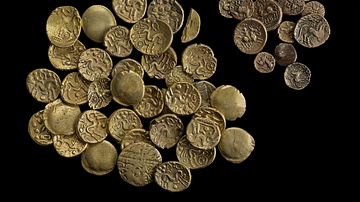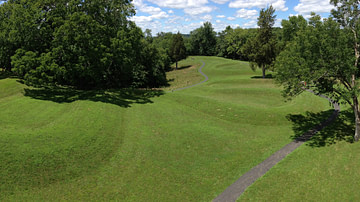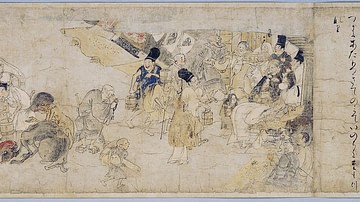Search
Search Results

Article
An Ancient Ghost Story: Philinnion & Machates
Ghost stories have existed for thousands of years, often in similar forms and frequently dealing with the same themes, in many of the most ancient cultures. The writer H.P. Lovecraft once wrote, "As may naturally be expected of a form so...

Interview
Interview: The Real Valkyrie: The Hidden History of Viking Warrior Women by Nancy Marie Brown
In this interview, World History Encyclopedia is joined by American author Nancy Marie Brown, who is talking to us about her new book The Real Valkyrie: The Hidden History of Viking Warrior Women. You can find the entire interview on our...

Article
Trade in Ancient Celtic Europe
Trade in raw materials and manufactured goods in ancient Celtic Europe was vibrant and far-reaching, particularly regarding the centre of the continent where there was a hub of well-established trade routes. As the Celts' territory expanded...

Definition
Viking Ships
Viking ships were built by the Scandinavians during the Viking Age (c. 790 CE - c. 1100 CE) and were used both within Scandinavia and beyond for purposes ranging from being the most important means of transport to trade and warfare. Viking...

Definition
Serpent Mound
Serpent Mound (also known as Great Serpent Mound) is an archaeological and historic site in Peebles, Ohio, USA, enclosing an effigy mound 1348 feet (411 m) long in the shape of a serpent, the largest effigy mound of a serpent in the world...

Definition
Predynastic Period in Egypt
The Predynastic Period in Ancient Egypt is the time before recorded history from the Paleolithic to the Neolithic Age and on to the rise of the First Dynasty and is generally recognized as spanning the era from c. 6000-3150 BCE (though physical...

Article
Global Trade in the 13th Century
In the 13th century, astonishing quantities of spices and silk passed from the Far East to Europe. Exact amounts are not known, but spice popularity in both cuisine and medicine reached its historical peak during the Middle Ages in Europe...

Article
Ghosts in Ancient China
Ghost stories were the earliest form of literature in ancient China. They were almost certainly part of a very old oral tradition before writing developed during the Shang Dynasty (1600-1046 BCE) and they continue to be popular in China today...

Article
Ships of the Gods of Ancient Egypt
The Nile River was the source of life for the ancient Egyptians and so figured prominently in their religious beliefs. At night, the Milky Way was considered a heavenly Nile, associated with Hathor, and provider of all good things. The Nile...

Image
Bronze Tripod, Mycenae
A Mycenaean bronze tripod from Grave IV, Grave Circle A, Mycenae, 16th Century BCE. (National Archaeological Museum, Athens)